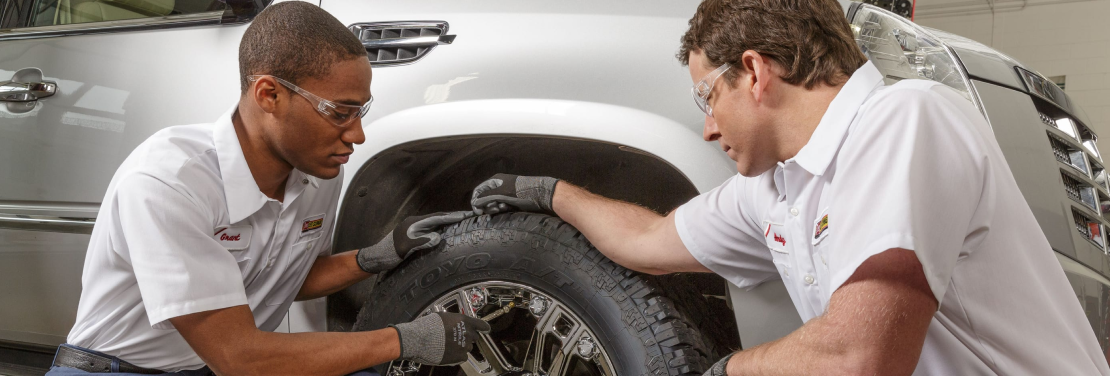Discover Top-Quality Tires Morris IL: Choose the Best for Your Vehicle
Tire Solution: Understanding Tire Stress Surveillance Solutions
Understanding Tire Stress Surveillance Equipments (TPMS) is a vital facet of maintaining optimum car efficiency and safety and security on the roadway. With advancements in vehicle innovation, TPMS has become a basic function in modern cars, offering real-time information on tire pressure degrees. Digging much deeper right into the details of TPMS, one can discover the various elements that comprise this system and the relevance of each in guaranteeing precise surveillance. From straight to indirect TPMS systems, the landscape of tire pressure monitoring is varied, each with its one-of-a-kind collection of benefits and considerations. Stay tuned to unwind the complexities of TPMS, from upkeep pointers to the indisputable benefits of maintaining your tires correctly pumped up. morris tire and alignment.

Significance of TPMS
The significance of Tire Stress Surveillance Solutions (TPMS) hinges on their ability to enhance lorry security and performance through real-time monitoring of tire stress degrees. Preserving the appropriate tire pressure is important for making sure optimal handling, braking, and total safety and security of an automobile. TPMS provides drivers with prompt responses on any type of underinflated or overinflated tires, allowing for prompt adjustments to be made.
Elements of TPMS
Comprising different essential components, a Tire Pressure Tracking System (TPMS) functions as an advanced safety and security feature in modern-day automobiles. The primary components of a TPMS include sensing units, a control module, and a caution indication. Sensors are normally located in the tire shutoff stem or affixed to the wheel assembly, where they determine tire pressure and transmit data to the control module. If it detects significantly low pressure in any of the tires, the control component procedures this info and causes a warning. The warning sign, often a symbol on the dashboard, informs the driver to check the afflicted tire or tires. Some advanced TPMS models also display the real tire stress analyses for each and every tire, providing chauffeurs with real-time details to make certain optimum tire performance and safety and security. By keeping track of tire pressure continually, TPMS helps avoid accidents, reduces tire wear, and boosts gas effectiveness, making it a vital element for car safety and efficiency.
Types of TPMS

On the other hand, indirect TPMS depends on the automobile's wheel rate sensing units to check tire stress. This system spots underinflation by comparing the rotational speeds of the wheels. Indirect TPMS is less expensive than straight TPMS, as it makes use of existing sensing units within the lorry.
While straight TPMS offers much more accurate readings, indirect TPMS is easier in style and commonly requires less maintenance. Both systems have their restrictions and benefits, and the selection in between them often depends upon aspects such as price, vehicle make, and personal preference. Comprehending the distinctions between these 2 sorts of TPMS can assist automobile proprietors make notified decisions regarding tire maintenance and safety.
TPMS Upkeep Tips
Effective upkeep of TPMS is essential for making sure optimum efficiency and security of your car. On a regular basis checking the TPMS sensors for any damage or deterioration is critical. Make sure that the sensors are cost-free and tidy from debris that can conflict with their functioning. In addition, it is suggested to examine the sensing unit batteries occasionally and replace them as required to guarantee accurate readings. Conduct routine examine the tire pressure levels and contrast them with the TPMS readings to ensure they are regular. Alter the system adhering to the maker's standards if there are any type of discrepancies. Throughout tire rotation or substitute, make sure that the TPMS components are managed thoroughly to avoid any potential damage. If the TPMS alerting light illuminates on the control panel, address the concern immediately by checking the tire stress and the overall system for any type of faults. By adhering to these upkeep suggestions, you can lengthen the life expectancy of your TPMS and enhance the safety and security of your driving experience.
Advantages of Appropriate Tire Stress
Maintaining appropriate tire stress, useful link as stressed in TPMS Maintenance Tips, is essential for gaining the various benefits related to ideal tire pressure levels. Among the key advantages of preserving the appropriate tire pressure is improved fuel performance. When tires are effectively blown up, there is much less moving resistance, bring about much better fuel economic climate. Furthermore, proper tire pressure ensures also tire wear, expanding the life-span of the tires and advertising much safer driving conditions. With the best tire pressure, lorries additionally have far better handling and grip, especially in negative climate condition. This can improve overall driving performance and security for the driver and passengers. Keeping optimum tire pressure can contribute to a smoother and extra comfortable ride by minimizing vibrations and sound created by underinflated tires. To conclude, the benefits of proper tire pressure exceed simply tire durability; they incorporate enhanced gas efficiency, boosted safety, much better vehicle performance, and total driving comfort.
Conclusion
To conclude, understanding tire pressure tracking systems (TPMS) is crucial for maintaining ideal tire stress and guaranteeing automobile safety. By acknowledging the importance of TPMS, being acquainted with its components, understanding the different kinds available, sticking to appropriate upkeep suggestions, and recognizing the advantages of keeping appropriate tire stress, chauffeurs can boost their driving experience and prolong the life-span of their tires. Proper tire stress is key to risk-free and look at this site reliable car procedure.
